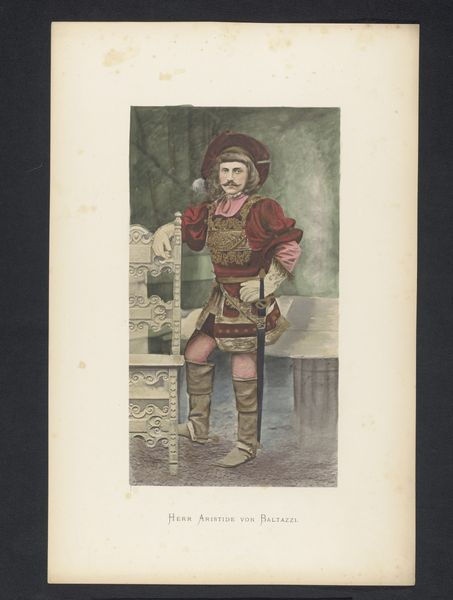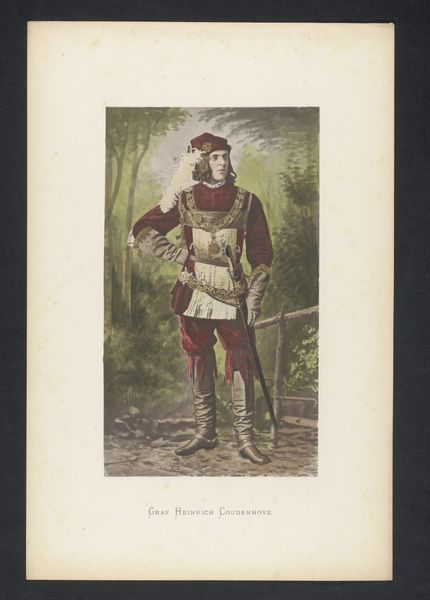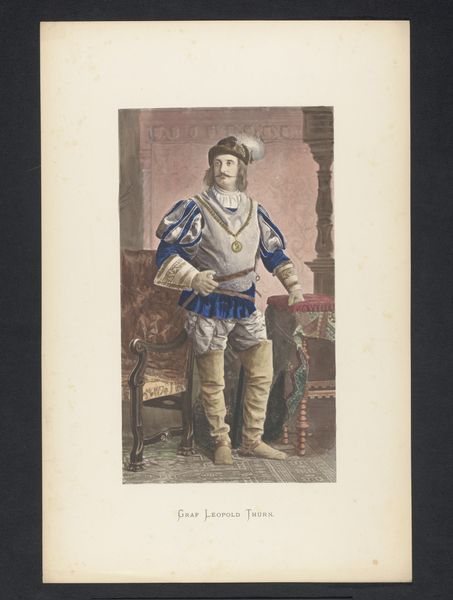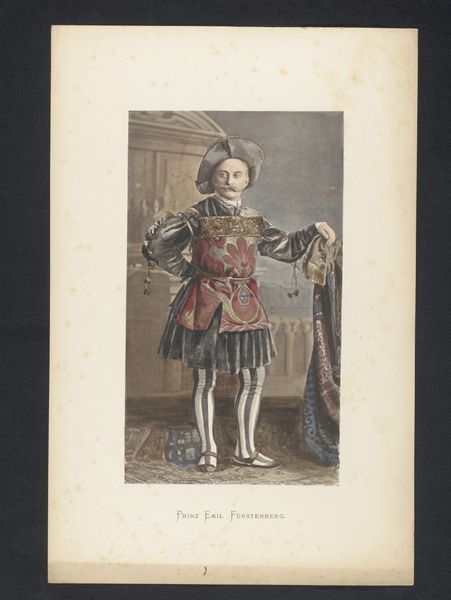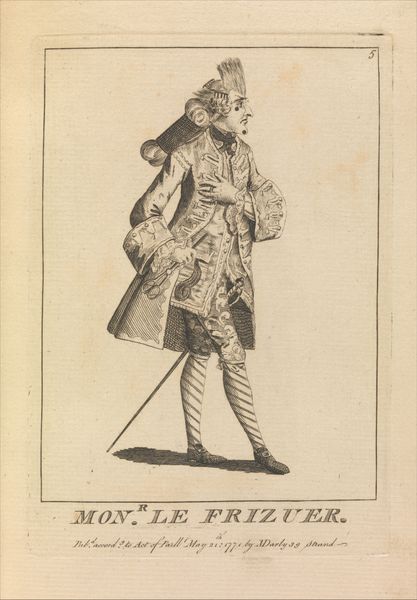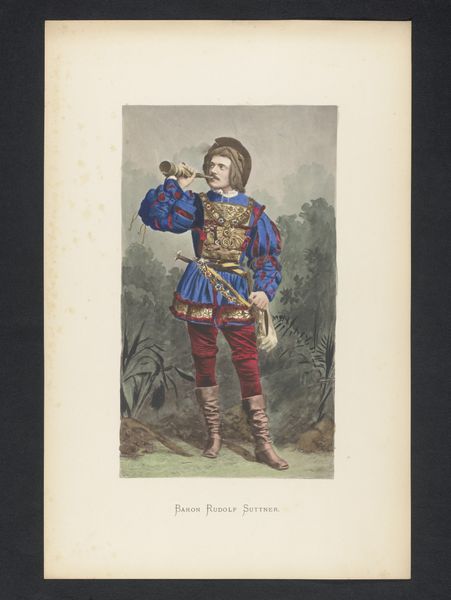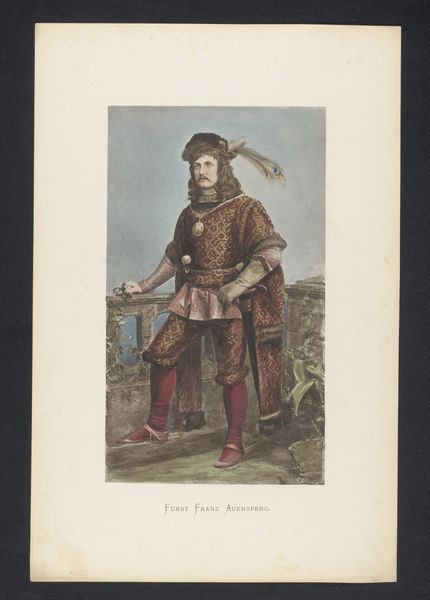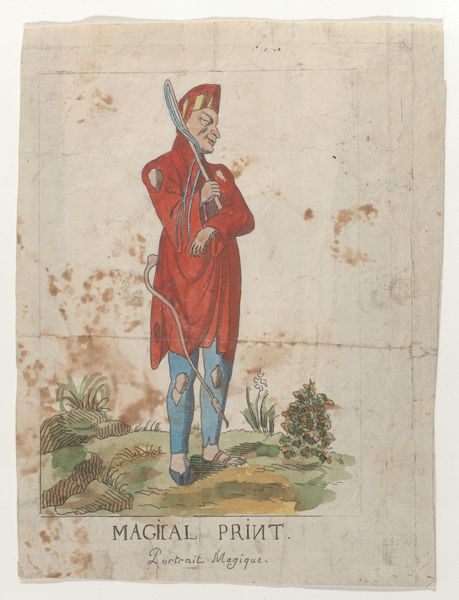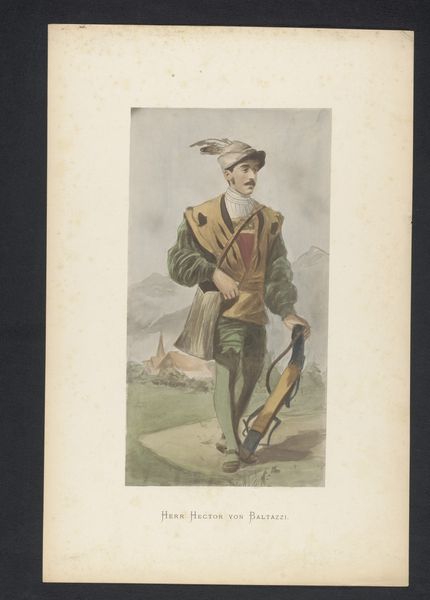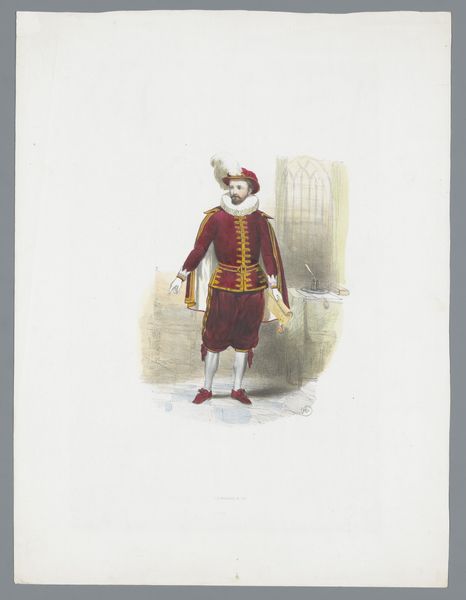
Dimensions: height 367 mm, width 211 mm
Copyright: Rijks Museum: Open Domain
Art Historian: Here we see "Portret van Ferdinand von Lobkowitz," an artwork likely created between 1880 and 1884, a product of its time steeped in the styles of Romanticism and Academic Art. Curator: The first thing that strikes me is the theatricality of it all. The figure's pose, the dramatic lighting—it’s all carefully staged to convey a sense of nobility and romantic heroism. The color scheme too; those deep reds and purples enhance that richness and status. Art Historian: Exactly! Consider the socio-political climate of the late 19th century. European aristocracy, while still influential, faced growing challenges to their power. Portraits like this served to reinforce traditional hierarchies and project an image of strength and legitimacy in a rapidly changing world. Curator: And that's perfectly embodied by the composition: the subject gazes off confidently while surrounded by elements of medieval attire that underscore wealth. A lot of attention has been given to capturing details on the chain and crossbow, each reflecting and amplifying light to achieve almost a jewelry-like appeal. Art Historian: His garb and the architectural backdrop are certainly evocative of the past. Notice, for instance, the details on the arches behind him. These historical references help construct a narrative, linking the sitter to a noble lineage and a grand, almost mythical history. Curator: Agreed, although that might suggest hearkening back to bygone eras with greater clarity than it in fact provides. In a work like this, it is not as much about reflecting true status or origins. Here it is about artifice, visual statements in terms of semiotics—everything down to his gaze seems coded with that intended impression. Art Historian: A clever insight. We could add that these depictions also fulfilled a social function; displayed in public or private collections, they helped solidify the subject's position within the aristocratic network. These are all ways the Lobkowitz family reinforced power through strategic deployment of imagery. Curator: Ultimately, analyzing a portrait like this reminds us how appearances are composed as intentional constructions and it speaks about how aesthetic considerations underpin meaning and contribute greatly to its reading, its history, its world. Art Historian: Precisely, analyzing “Portret van Ferdinand von Lobkowitz” gives insight into its narrative construction; at the same time we also begin understanding strategies used in aristocratic portraiture. Curator: A balanced view that brings its forms, symbols and society back together!
Comments
No comments
Be the first to comment and join the conversation on the ultimate creative platform.
